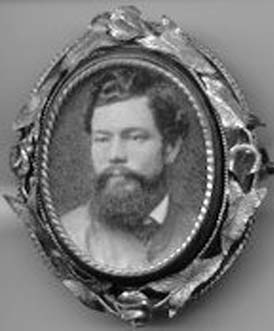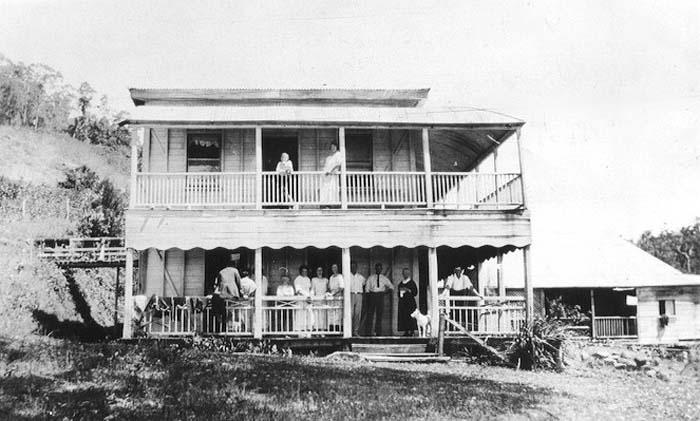Walter Hay is well known locally as an early developer of Noosa Heads and the first landowner in Hastings Street. But he was also the first resident of the area that would become known as Gympie Terrace.

A brooch with a photo of Walter Hay, mounted circa 1860s
Hay migrated from Aberdeen, Scotland. Initially, in 1855, he settled in the Wide Bay area near Maryborough at the age of 22 years. He fathered ten children here before moving to the Noosa area in 1870. It was Hay who cut the track that would become the main road from Gympie to Tewantin. In 1871, he selected 134.4 hectares of land on the south bank of the Noosa River across Lake Doonella from Tewantin. It had a wide river frontage and extended up a slow rise through what is now Wallace Park. To the west was the land recently selected by Frederick Goodchap and the eastern boundary was where Eumundi Road presently runs.
Hay built a three-bedroom house with a verandah, an outhouse for servants, a slaughterhouse, stockyards, and a boatshed at a cost of £160 (about $170,000 today). The property was called Hilton Park, whence Hilton Terrace and Hilton Esplanade get their names. An area was cleared for a garden and a large crop of maize for cattle was planted. The property was extended to 400 hectares in 1878 with a large quantity of hardwood timber available as well as a large planting of sugar cane.
Hay built Bay View House on the hill above Noosa Heads in 1882. He moved his family there and put Hilton Park on the market for sale. But the property did not sell and members of his family remained in residence, with a grandchild being born there in 1895. The house burned down soon afterwards. It is unknown when the property was sold but a sizeable portion of the land was bought by Arthur Wallace from Robert Adams in 1930. Wallace built a house on the hill, now known as Wallace House, and it remains in Wallace Park today as the home of Noosa Shire Arts & Craft Association.

Bay View House, Noosa Heads, early 20th century
